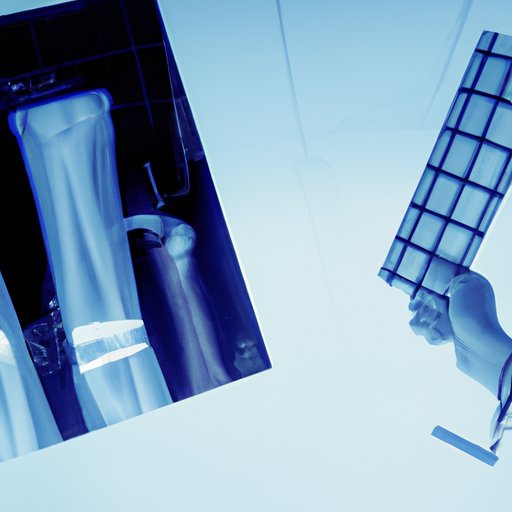Introduction
It is almost impossible to imagine the medical world without X-ray technology today. But who was responsible for this revolutionary invention? The answer is Wilhelm Roentgen, a German physicist who discovered X-rays in 1895. This article looks at the life of Wilhelm Roentgen and his discovery of X-ray technology, as well as exploring the impact of his invention on modern medicine.
A Biographical Look at the Life of Wilhelm Roentgen and His Discovery of X-Ray Technology
Wilhelm Conrad Röntgen was born in Lennep, Germany in 1845. He attended two universities, where he studied mathematics, physics, chemistry, and mechanics. After graduating, he began teaching at the University of Strasbourg and later moved to the University of Giessen, where he was appointed professor of physics. In 1888, he accepted a position at the University of Würzburg, which would prove to be an especially important step in his career.
It was during his time at the University of Würzburg that Roentgen made his most famous discovery. On November 8th, 1895, he conducted an experiment involving a cathode ray tube in his laboratory. He noticed a faint light emanating from a nearby chemically coated screen when he turned off the lights in the room. This light, which became known as “X-rays”, was the result of a new kind of rays emitted from the tube.
Exploring the Impact of Wilhelm Roentgen’s Invention of X-Ray Technology
Roentgen’s discovery of X-ray technology had a profound effect on the medical world. Before X-rays, doctors had few tools available to them to diagnose and treat illnesses. With the invention of X-rays, doctors were suddenly able to see inside the human body and detect abnormal tissue or bone structure. This allowed them to make more accurate diagnoses and develop better treatment plans.
X-ray technology also revolutionized diagnostic imaging. Doctors could now take images of the bones and organs inside the body, allowing them to identify diseases and other abnormalities quickly and accurately. This improved the accuracy and speed of diagnosis, making the process of treating patients much more efficient.
Finally, the invention of X-rays enabled advances in treatments and surgeries. By being able to visualize the interior of the body, doctors could perform more precise operations and reduce the risk of complications. X-ray technology has also been used to guide surgeons during complex procedures, such as brain surgery.
What Was the Process Behind the Discovery of X-Ray Technology? Examining Wilhelm Roentgen’s Work
In order to understand the process behind Roentgen’s discovery of X-ray technology, it is important to look at the experiments he conducted prior to his breakthrough. In the months leading up to his discovery, Roentgen had been experimenting with cathode ray tubes. These are devices that emit a stream of electrons when heated by electricity. Roentgen noticed that these tubes produced a mysterious invisible light that could pass through black paper.
He then set up an experiment where he placed a cathode ray tube in a sealed wooden box and covered it with black paper. When he turned off the lights in the room, he noticed that a fluorescent screen near the tube began to glow. This was the first time anyone had ever seen X-rays.
Roentgen continued to study the properties of X-rays, discovering that they were capable of passing through materials like flesh and bone. He also developed a method for taking X-ray images, which helped to further the development of the technology.
An In-Depth Analysis of Wilhelm Roentgen and His Pioneering X-Ray Technology
The legacy of Wilhelm Roentgen lives on today in the form of X-ray technology. His invention has had a profound impact on modern medicine, allowing doctors to diagnose and treat illness with greater accuracy and speed. X-ray technology has also enabled advances in treatments and surgeries, making them safer and more effective.
Roentgen’s work was recognized in many ways. In 1901, he was awarded the Nobel Prize in Physics for his discovery of X-rays. He was also honored with numerous awards and honorary degrees from universities around the world. Today, there is even a unit of measurement called the “roentgen”, which is used to measure radiation exposure.
Conclusion – Summary of Wilhelm Roentgen’s Life and the Role He Played in Developing X-Ray Technology
Wilhelm Roentgen was a German physicist who made a groundbreaking discovery in 1895 – X-ray technology. This invention revolutionized the medical world, allowing doctors to diagnose and treat illnesses with greater accuracy and speed. Roentgen’s work was widely recognized, and he was awarded the Nobel Prize in Physics in 1901. His legacy continues to live on today in the form of X-ray technology, which has had a profound impact on modern medicine.
(Note: Is this article not meeting your expectations? Do you have knowledge or insights to share? Unlock new opportunities and expand your reach by joining our authors team. Click Registration to join us and share your expertise with our readers.)
